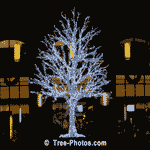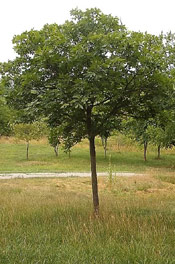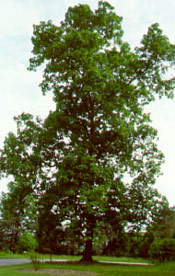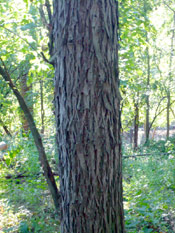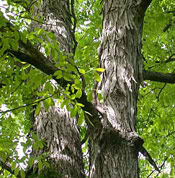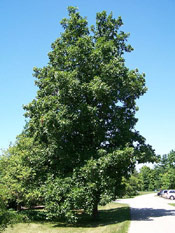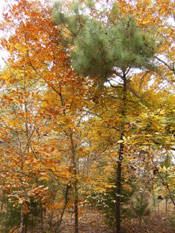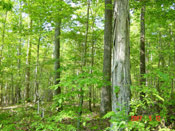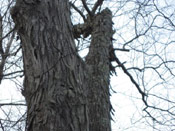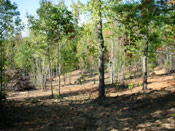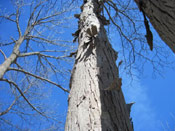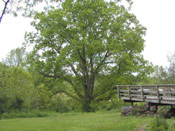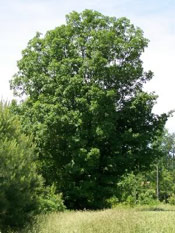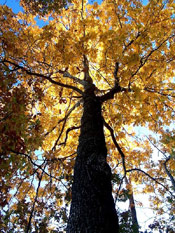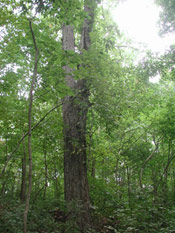Hickory Tree Pictures
Hickory Tree Pictures category you will find lots of nice pictures of hickory trees.
You will also find a lot of wonderful information on hickory trees, including information about the hickory tree species, planting information, and more.
This is valuable and useful information that can help you to learn more about the hickory tree.
Hickory Tree Photos
Full size each hickory tree picture, just click on the hickory photo you like to enlarge the hickory image.
Enjoy these pictures of Hickory Trees.
Hickory Tree Pictures
Hickorys |
Hickory Bark |
Young Hickorys |
Hickory Tree Pictures 1 - Hickory Tree Pictures 2
Hickory Trees, Facts and Information on the Hickory Tree
Here is some detailed information on hickory trees.
Trees in the genus Carya are commonly known as Hickory, derived from the Powhatan, Indigenous Algonquian people's language of Virginia. The genus includes 17 to 19 species of deciduous trees with pinnately compound leaves and big nuts. Between five and six species are native to China, Indochina, and India (Assam Province), 11 to 12 are from the United States, two to four are from Canada and 4 are found in Mexico.
Another Asian species, beaked hickory, previously listed as Carya sinensis, is now treated in a separate genus, Annamocarya, as Annamocarya sinensis.
Hickory flowers are small, yellow-green catkins produced in spring. They are wind-pollinated and self-incompatible. The fruit is a globose or oval nut, 2 to 5 cm (0.79-2.0 in) long and 1.5 to 3 cm (0.59 to 1.2 in) diameter, enclosed in a four-valved husk, which splits open at maturity. The nut shell is thick and bony in most species, and thin in a few, notably C. illinoinensis; it is divided into two halves, which split apart when the seed germinates.
Hickory is used as a food plant by the larvae of some Lepidoptera species.
Some fruits are borderline and difficult to categorize. Hickory nuts (Carya) and walnuts (Juglans) in the Juglandaceae family grow within an outer husk; these fruits are technically drupes or drupaceous nuts, and thus not true botanical nuts. Tryma is a specialized term for such nut-like drupes.
Hickory Wood
Hickory wood is very hard, very stiff, very dense and very shock resistant. As stated in the U.S. Forestry Service pamphlet on "Important Trees of Eastern Forests", "there are some woods that are stronger than hickory and some that are harder, but the combination of strength, toughness, hardness, and stiffness found in hickory wood is not found in any other commercial wood." It is used for tool handles, bows, wheel spokes, carts, drumsticks, lacrosse stick handles, golf club shafts (sometimes still called hickory stick, even though made of steel or graphite), the bottom of skis, walking sticks and for punitive use as a switch (like hazel), and especially as a cane-like hickory stick in schools and use by parents. Paddles are often made from hickory. Baseball bats were formerly made of hickory, but are now more commonly made of ash. Hickory is replacing ash as the wood of choice for Scottish shinty sticks (also known as camans).
Hickory is also highly prized for wood-burning stoves, because of its high energy content. Hickory wood is also a preferred type for smoke curing meats. In the Southern United States, hickory is popular for cooking barbecue, as hickory grows abundantly in the region, and adds flavor to the meat. Hickory is sometimes used for wood flooring due to its durability and character.
A bark extract from shagbark hickory is also used in an edible syrup similar to maple syrup, with a slightly bitter, smoky taste.
Hickory Nut
The nuts of some species are palatable, while others are bitter and only suitable for animal feed. Shagbark and shellbark hickory, along with pecan, are regarded by some as the finest nut trees.
When cultivated for their nuts, clonal (grafted) trees of the same cultivar cannot pollinate each other because of their self-incompatibility. Two or more cultivars must be planted together for successful pollination. Seedlings (grown from hickory nuts) will usually have sufficient genetic variation.
Hickory Tree Pictures 1 - Hickory Tree Pictures 2
Thank you for visiting the Hickory Tree Pictures category at Tree Pictures Online.com, please come back soon for more great tree pictures!
Pictures Sites
Fireplace Pictures - Tree Pictures - Gazebo Pictures
Church Pictures
Ancient Symbols
Fall Pictures
Manufactured Home Pictures
Log Siding Shadow Puppets Caribbean Islands Wolf Pictures
Play Touch Games Pictures of Winter Shadow Puppet Pictures Waterfall Pictures
Resume Samples
Make Hot Pictures Job Application Forms
![]()
![]()


